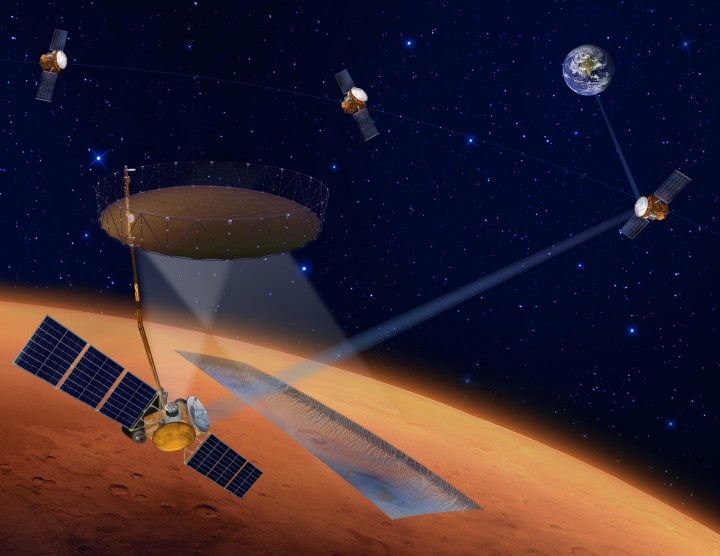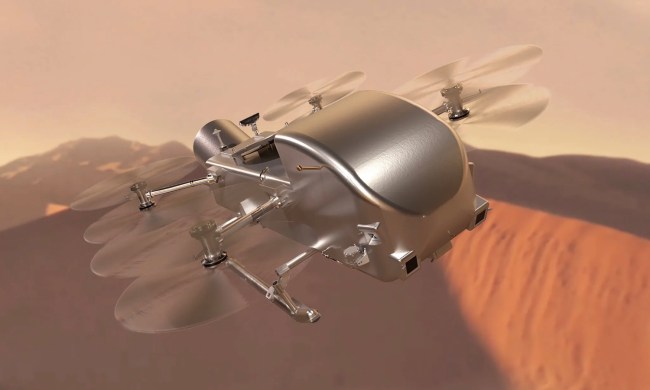
If we ever want to send humans to Mars, we’ll need to find resources there which can help sustain a mission. One of the most essential resources for crewed missions is water, and now international space agencies want to find a way to locate it on the red planet.
NASA has partnered with the Italian Space Agency (ASI), the Canadian Space Agency (CSA), and the Japan Aerospace Exploration Agency (JAXA) to announce they plan to investigate building a robotic orbiter called the Mars Ice Mapper, which would search for and map the location and depth of sub-surface water ice on Mars.
Scientists know that there is plenty of ice at Mars’s poles and in large craters, but they also want to know where ice is located on the rest of the planet. There is thought to be plentiful ice just below the surface in many areas, which would potentially be a very useful resource for future crewed missions there. Instead of having to trek all the way to the poles for ice, future astronauts could dig it out of the ground — providing they know where to look.
The idea is that robotic missions like the Mars Ice Mapper could pave the way for human missions, NASA officials explained. “This innovative partnership model for Mars Ice Mapper combines our global experience and allows for cost-sharing across the board to make this mission more feasible for all interested parties,” said Jim Watzin, NASA’s senior advisor for agency architectures and mission alignment, in a statement. “Human and robotic exploration go hand in hand, with the latter helping pave the way for smarter, safer human missions farther into the solar system. Together, we can help prepare humanity for our next giant leap — the first human mission to Mars.”
As well as assisting in human missions, learning more about ice on Mars would be scientifically valuable too. If researchers were able to collect ice cores from the planet, for example, they could see a record of the geological history of the planet. It could also contribute to the search for evidence of ancient life there.
“In addition to supporting plans for future human missions to Mars, learning more about subsurface ice will bring significant opportunities for scientific discovery,” said Eric Ianson, NASA Planetary Science Division Deputy Director and Mars Exploration Program Director. “Mapping near-surface water ice would reveal an as-yet hidden part of the Martian hydrosphere and the layering above it, which can help uncover the history of environmental change on Mars and lead to our ability to answer fundamental questions about whether Mars was ever home to microbial life or still might be today.”



